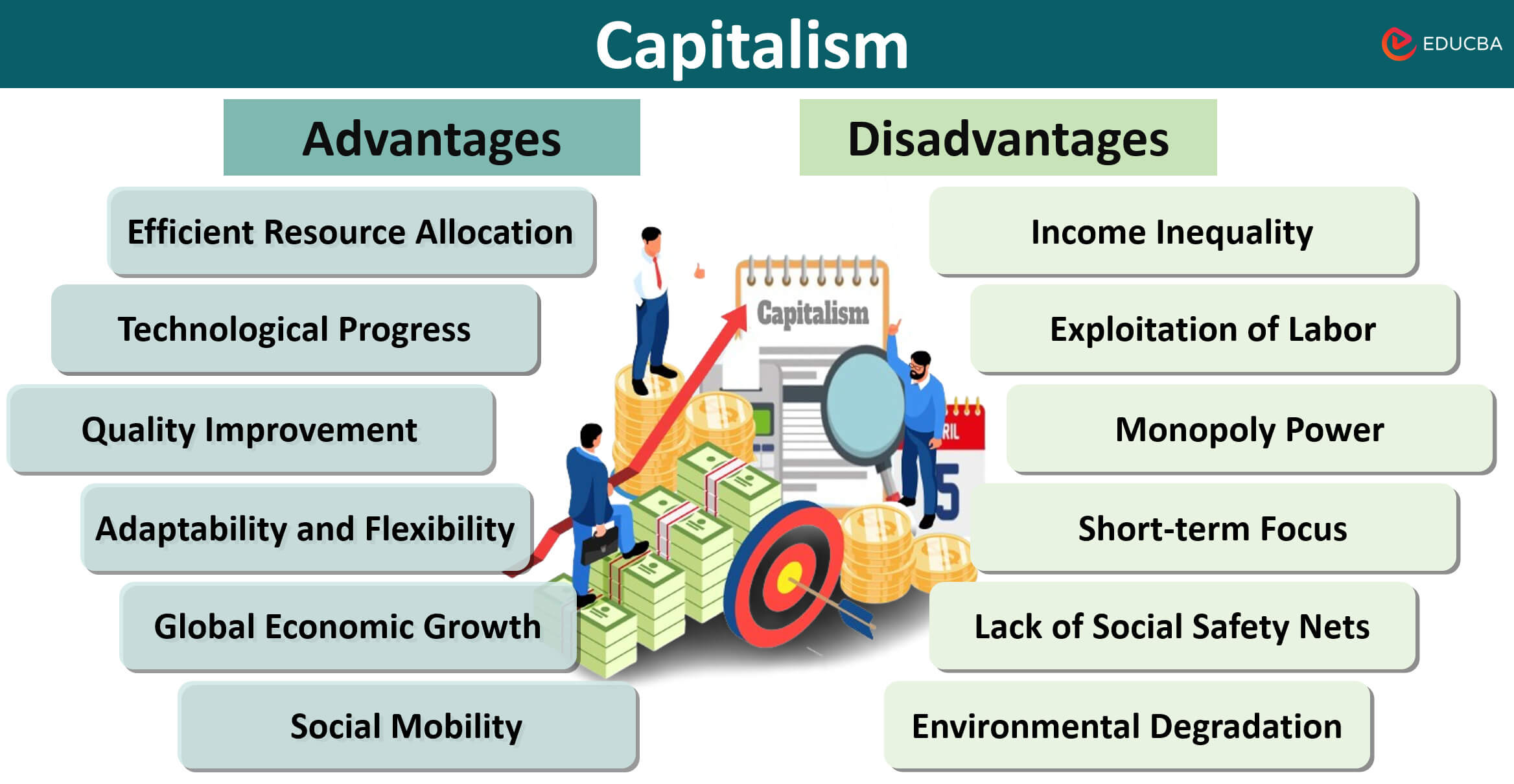Introduction to Advantages and Disadvantages of Capitalism
Imagine a new online startup founded by entrepreneurs. Their product is extremely unique, which can cater to consumer demands and also generate profit. This is an example of capitalism. Capitalism is an economic system where individuals or companies own businesses to make money. This system relies on market forces to determine prices and production, promoting competition. This article will study the advantages and disadvantages of capitalism and how it encourages efficiency and innovation. Critics argue it can also result in inequality and exploitation.
Advantages of Capitalism
Let us look at some of the advantages of capitalism:
1. Leads to Efficient Resource Allocation
In capitalism, resources are allocated according to market demand. Prices play an important role in this process, determining the interplay of supply and demand dynamics. These prices serve as signals, indicating where resources are most needed in the economy. These prices signal where the economy requires the most resources. Efficient resource allocation, in turn, works to maximize productivity and boost overall economic output.
2. Drives Innovation and Technological Progress
When businesses start making a profit, it motivates them to invest in research and development. This motivation encourages the creation of new products and technologies, contributing to rapid advancements in various industries.
3. Competition Leads to Better Product Quality
Capitalism encourages businesses to compete, motivating them to enhance product quality and keep prices reasonable. This competition benefits consumers by offering various improved options and better value for their money.
4. Encourages Adaptability and Flexibility
Capitalism quickly adjusts to market changes and welcomes new ideas. Unlike systems with central control, businesses in capitalism make independent choices to make a profit.
5. Leads to Global Economic Growth
Capitalism allows countries to trade with each other, making the whole world’s economy grow. When countries specialize in what they are good at, everyone benefits.
6. Allows Social Mobility
In capitalism, success is possible for those who work hard and show initiative. This creates a system where effort and achievements help individuals climb the socioeconomic ladder.
Disadvantages of Capitalism
Let us look at some of the disadvantages of capitalism:
1. Income Inequality
Capitalism can lead to significant income differences where a small portion of the population accumulates a large amount of wealth, leaving others with comparatively limited resources.
2. Exploitation of Labor
In a capitalist system, there is potential exploitation as businesses may prioritize profits over fair wages and working conditions.
3. Monopoly Power
Capitalism promotes monopolies, limiting competition and allowing a single entity to control a market, leading to higher prices and reduced consumer choices.
4. Short-term Focus
In capitalism, businesses usually care more about making quick profits than thinking about long-term sustainability. This means they might make decisions that make shareholders happy now but end up hurting the community or the environment later.
5. Lack of Social Safety Nets
Capitalist systems may lack strong social safety nets, leaving powerless individuals without adequate support during economic downturns or personal crises.
6. Environmental Degradation
In capitalism, when a company focuses too much on making money quickly, it might harm the environment in the long run, as they don’t always think about how their actions can negatively impact nature in the future, prioritizing short-term gains over long-term ecological sustainability.
Final Thoughts
Capitalism can drive innovation and economic growth in the future but may lead to challenges like inequality and environmental issues. Balancing the concerns listed in the advantages and disadvantages of capitalism is important for sustainability.
Recommended Articles
If you found our article listing the several advantages and disadvantages of capitalism helpful, please visit the following recommendations.



